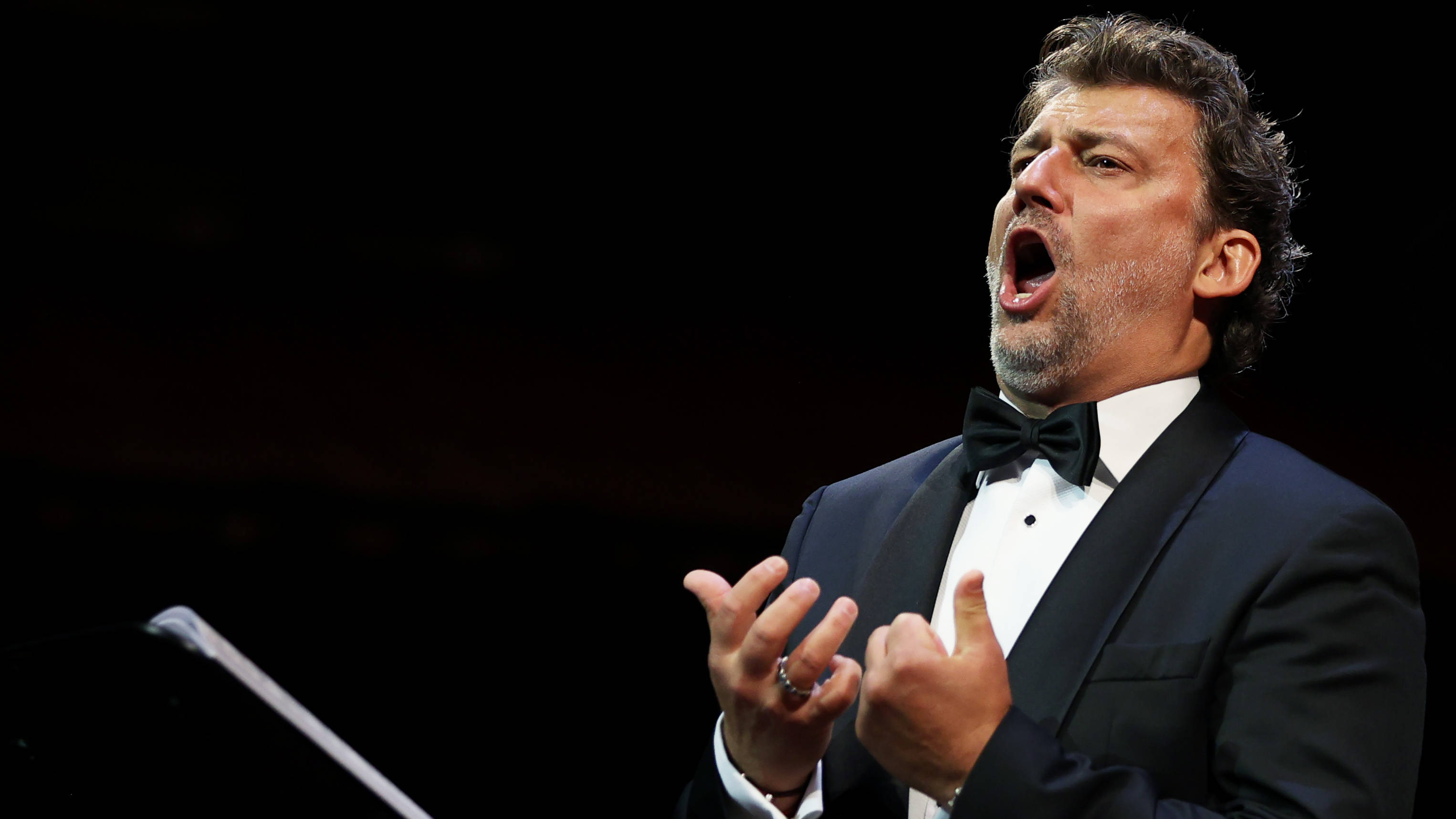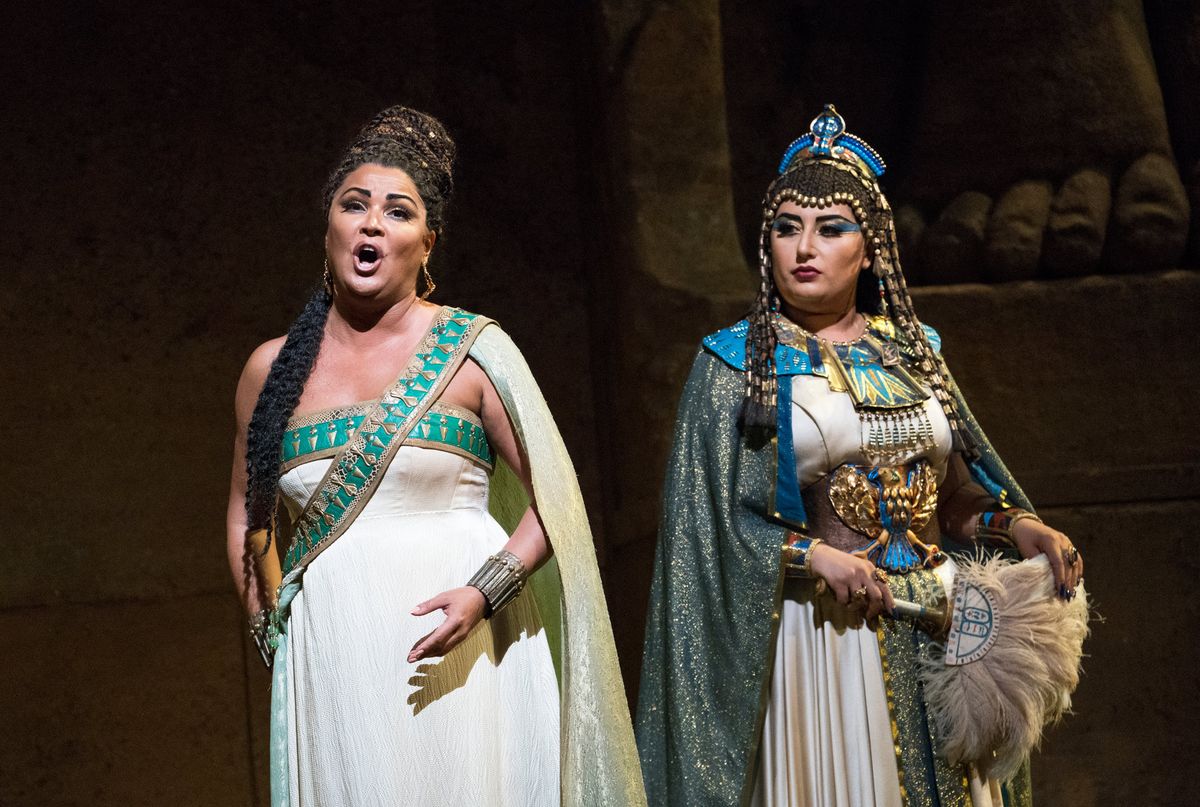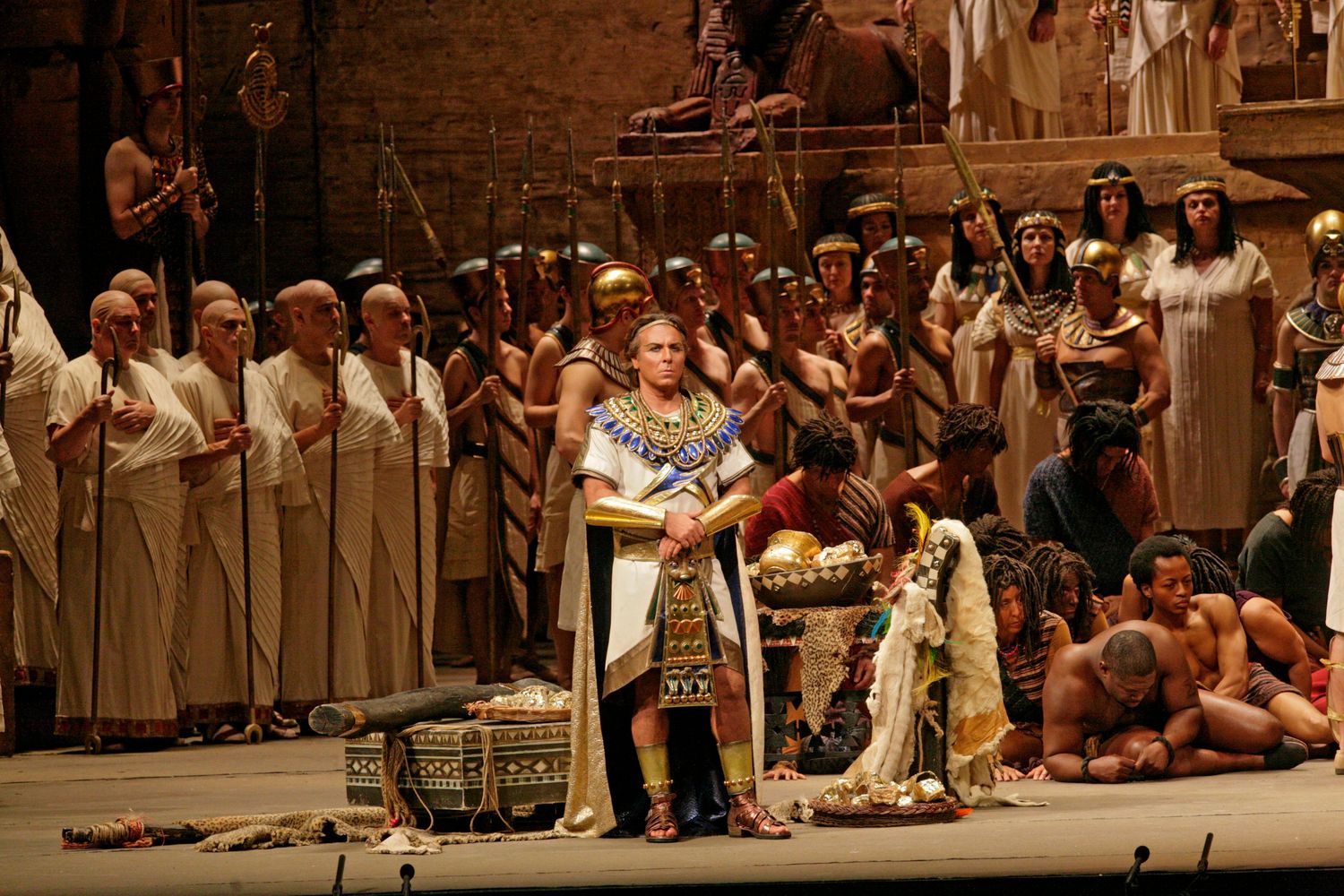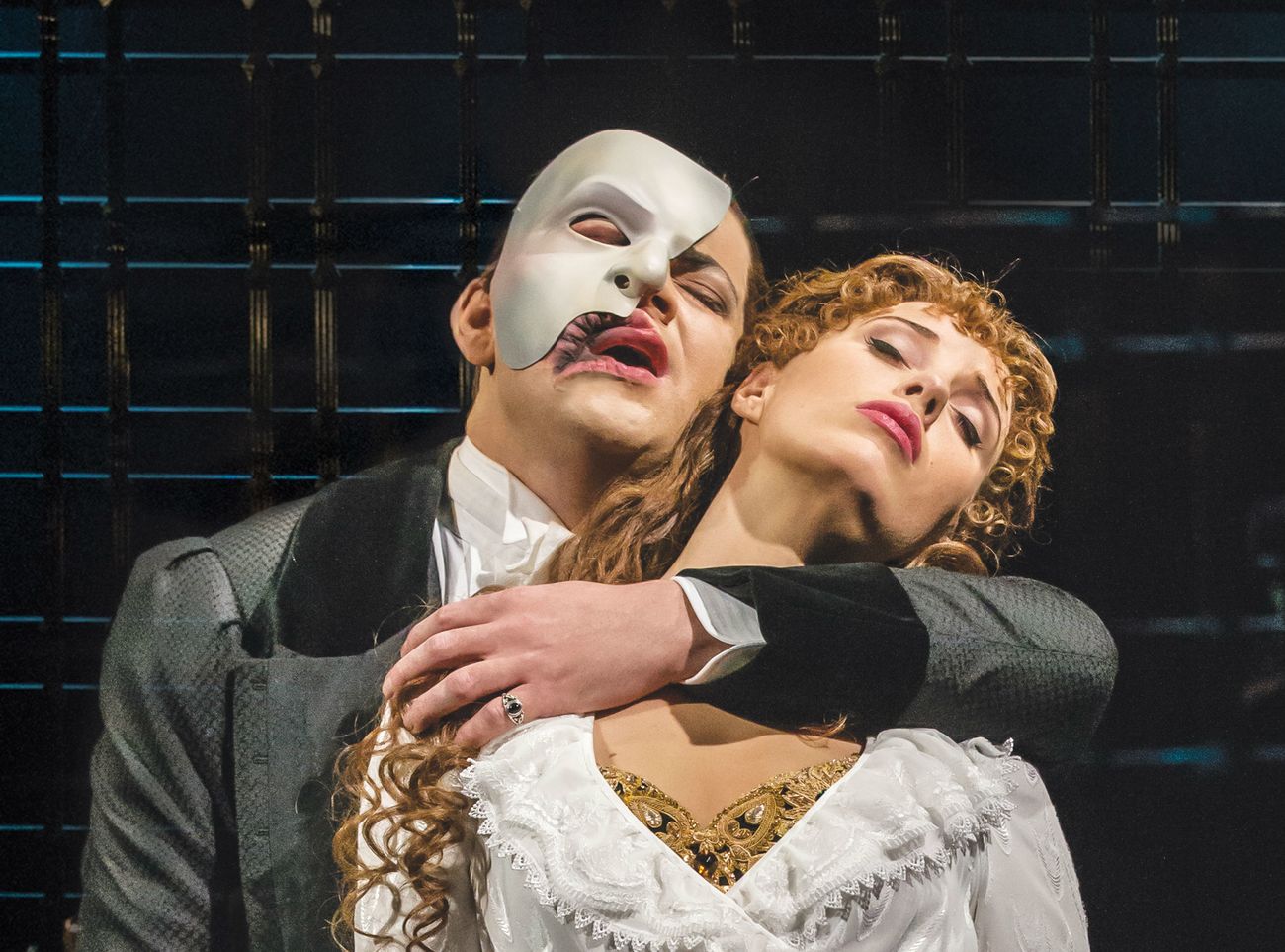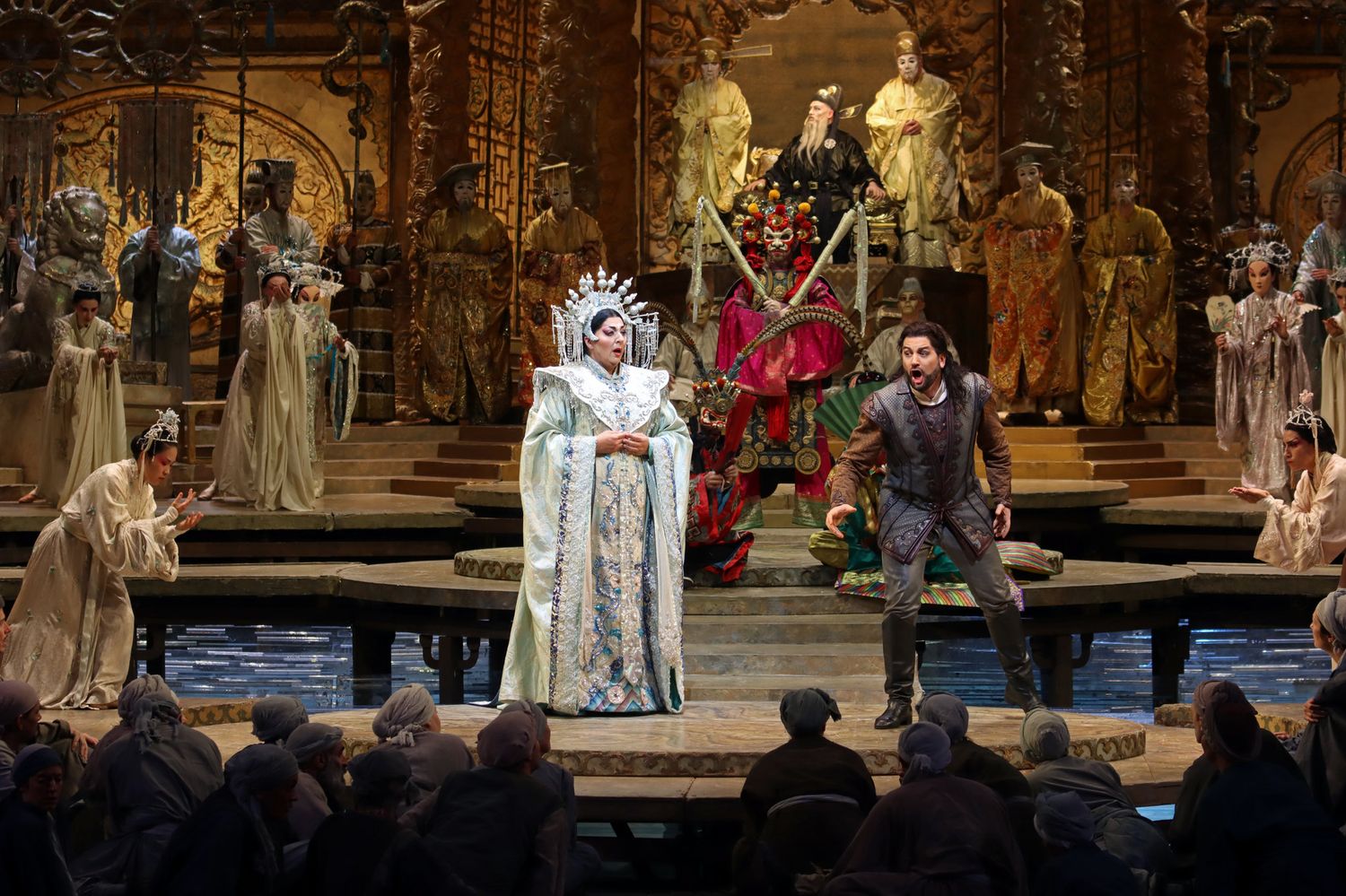Home>Events & Info>Opera>What Is A Recitative In Opera
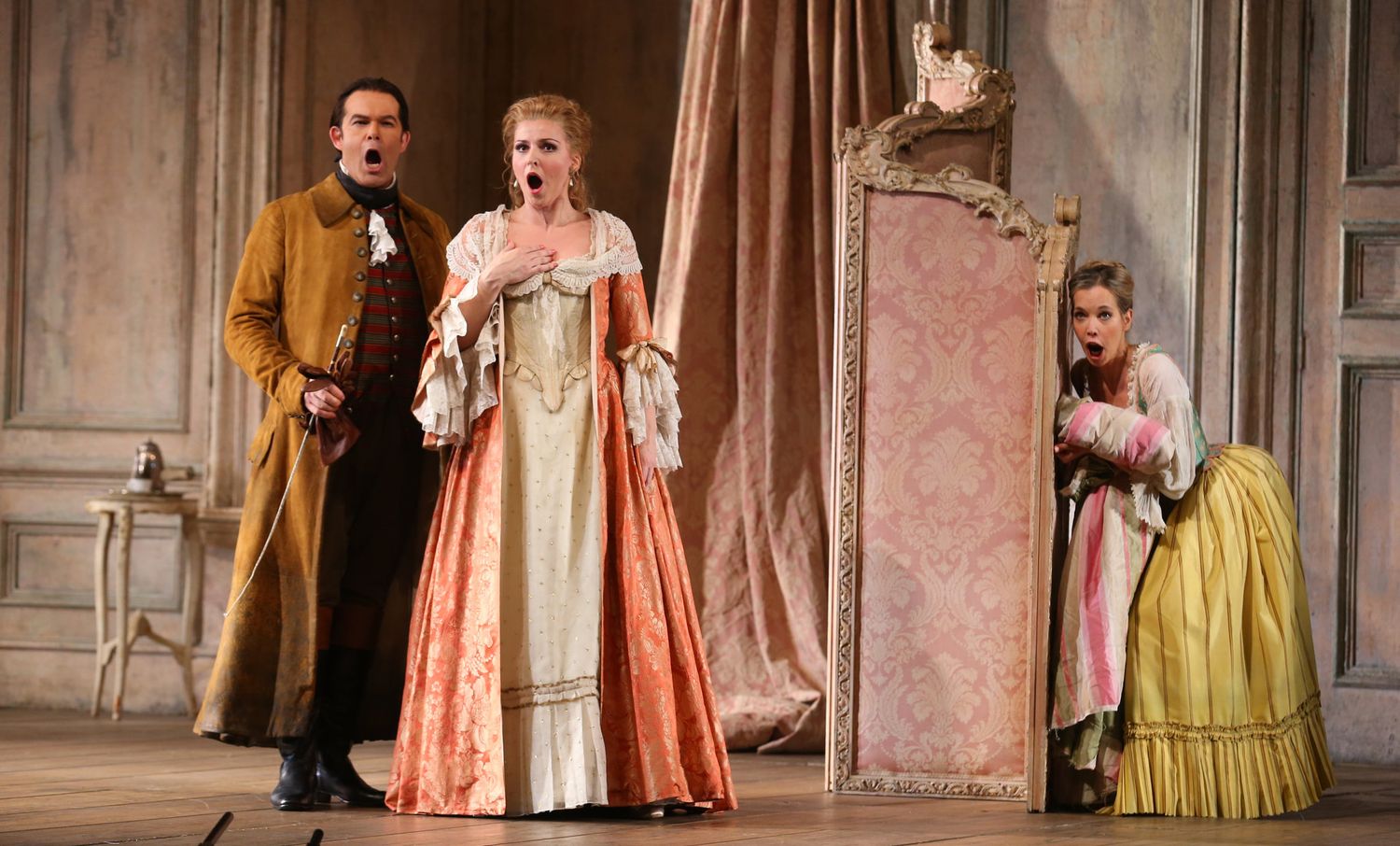

Opera
What Is A Recitative In Opera
Published: January 7, 2024
Discover the role of recitative in opera and how it enhances storytelling. Uncover the beauty and depth of this unique form of musical expression
(Many of the links in this article redirect to a specific reviewed product. Your purchase of these products through affiliate links helps to generate commission for AudioLover.com, at no extra cost. Learn more)
Table of Contents
Introduction
Opera, a magnificent art form that combines music and theater, has captivated audiences across the globe for centuries. Within the grand world of opera, there exists a unique and fascinating element known as recitative. Often described as a bridge between the musical and dramatic aspects of an opera, recitative plays a crucial role in advancing the story and conveying the emotions of the characters.
Recitative, derived from the Italian word “recitativo,” meaning “to recite,” is a style of vocal singing that imitates speech patterns. It serves as a vehicle for the dialogue and narrative portions of an opera, allowing the characters to communicate their thoughts and feelings in a more natural and conversational manner. Unlike the highly structured and melodic arias, which are characterized by their lyrical beauty and expressive melodies, recitative focuses on the rhythmic and declamatory delivery of the text.
With its origins dating back to the early Baroque period, recitative has evolved and adapted over time to suit the ever-changing demands of opera composers and audiences. It has become an integral part of the operatic experience, seamlessly bridging the gap between the spoken word and the soaring melodies that transport listeners to new realms of emotion and meaning.
In this article, we will delve into the world of recitative in opera, exploring its historical origins, distinctive characteristics, various types, and its role in shaping the narrative of an opera. We will also highlight notable examples of recitative in some of the most renowned operas throughout history.
Join us on a journey through the enchanting world of opera as we unravel the mysteries and magic of recitative.
Definition of Recitative
Recitative in opera can be defined as a style of vocal singing that imitates speech patterns. It serves as a means of delivering dialogue and narrative portions of an opera in a more natural and conversational manner. Unlike the highly structured and melodic arias, which are characterized by their lyrical beauty and expressive melodies, recitative focuses on the rhythmic and declamatory delivery of the text.
Recitative is often marked by its reciting tone, where the singer’s voice follows the natural rhythms and inflections of speech. This style of singing allows the characters to express their thoughts, emotions, and engage in dramatic interactions with other characters on stage. In many ways, recitative acts as the connective tissue between the musical and dramatic elements of an opera, tying together the storyline and providing a sense of immediacy and realism to the audience.
While recitative may not possess the same level of melodic complexity or extended vocal lines as arias, it possesses its own unique set of musical characteristics. It is often accompanied by a simple instrumental accompaniment that serves to support and enhance the vocal delivery. The musical phrases within recitative are more fluid and flexible, allowing the singers to adapt and respond to the dramatic nuances of the text.
Overall, the purpose of recitative is to convey the plot and emotions of the characters in a direct and concise manner. It serves as a storytelling device, driving the narrative forward and guiding the audience through the opera’s various events and conflicts. Without recitative, the audience would be left without a clear understanding of the characters’ motivations, relationships, and the unfolding drama on stage.
Recitative is a fundamental element of opera, showcasing the artistry and versatility of both the singers and composers. It embodies the essence of the human voice as a storytelling instrument, allowing the audience to connect with the characters on a deeper level and experience the power of opera firsthand.
Historical Origins of Recitative in Opera
The origins of recitative in opera can be traced back to the early Baroque period in Italy, during the late 16th and early 17th centuries. It emerged as a response to the desire for a more expressive and naturalistic style of singing in opera, moving away from the highly stylized and ornamented vocal techniques of the Renaissance.
One of the key figures credited with the development of recitative is Jacopo Peri, an Italian composer who sought to recreate the power and emotion of ancient Greek drama. In his work, “Dafne,” which is considered the first operatic composition, Peri employed a recitative style with a simple instrumental accompaniment to convey the dialogue and narrative.
As opera gained popularity in Italy and throughout Europe, composers such as Claudio Monteverdi further refined and expanded the use of recitative. Monteverdi’s groundbreaking opera, “Orfeo,” marked a significant milestone in the evolution of recitative, establishing it as a primary means of dramatic expression in opera.
During the Baroque period, recitative underwent various stylistic developments. It experienced a shift towards a more structured and standardized form, with defined rhythmic patterns and harmonic progressions. Composers like George Frideric Handel and Jean-Baptiste Lully played instrumental roles in shaping the conventions of recitative, creating a framework that would be followed by composers for centuries to come.
Notably, the Italian composer Alessandro Scarlatti further refined recitative in the early 18th century. He introduced a more elaborate and virtuosic style known as “stile recitativo,” which incorporated greater embellishments and expressive melodic lines. Scarlatti’s contributions laid the foundation for the bel canto style of singing that would emerge in the 19th century.
Throughout the centuries, recitative continued to evolve and adapt to the changing musical and dramatic tastes of the time. Composers such as Wolfgang Amadeus Mozart and Richard Wagner explored new possibilities in recitative, infusing it with their unique musical styles and pushing the boundaries of its expressive capabilities.
Today, recitative remains an essential and integral part of opera, serving as a vital storytelling device that connects the audience with the characters and emotions on stage. Its historical origins in the Baroque period continue to influence the way it is performed and understood, showcasing the enduring legacy and significance of this captivating element in the world of opera.
Characteristics of Recitative in Opera
Recitative in opera possesses distinct characteristics that set it apart from other vocal styles. These characteristics contribute to its role in conveying dialogue and advancing the narrative of an opera.
One of the key characteristics of recitative is its speech-like quality. Unlike arias, which feature melodic and lyrical phrases, recitative follows the natural rhythms and inflections of speech. This allows the singers to deliver the text in a conversational manner, making it easier for the audience to understand and connect with the storyline.
Recitative is often marked by its flexible and fluid musical phrases. Rather than adhering to strict musical structures, recitative allows for a more improvisatory approach, adapting to the dramatic nuances of the text. This flexibility gives singers the freedom to express the emotions and intentions of their characters with greater authenticity and spontaneity.
While recitative may lack the elaborate melodies found in arias, it is accompanied by a simple instrumental accompaniment. This accompaniment typically consists of a bass line or a small ensemble, supporting the singer’s vocal delivery without overshadowing the spoken-like nature of the recitative. The instrumental accompaniment provides a subtle harmonic and rhythmic foundation for the singer, enhancing the overall dramatic impact of the performance.
Recitative also serves as a means of transitioning between different musical sections in an opera. It acts as a bridge between arias, ensembles, and other vocal or instrumental passages. This transitional function allows for seamless connections between different scenes and moments, maintaining the continuity and flow of the opera’s narrative.
Additionally, recitative often incorporates textual repetition and emphasis to convey the significance of certain words or phrases. This repetition serves to highlight key events, emotions, or developments in the story, creating dramatic tension and emphasizing the importance of the moment.
Overall, the characteristics of recitative in opera reflect its purpose as a vehicle for storytelling and dramatic expression. Its speech-like quality, flexible musical phrases, instrumental accompaniment, and transitional function contribute to its vital role in advancing the narrative and connecting the audience with the emotions and intentions of the characters on stage.
Types of Recitative
Recitative in opera encompasses various types that vary in musical style, structure, and dramatic function. Below are some of the most common types of recitative found in opera:
- Recitativo secco: Also known as “dry recitative,” recitativo secco is characterized by its sparse instrumental accompaniment. The singer’s voice takes center stage, with only a simple basso continuo providing minimal harmonic support. This type of recitative is often used for dialogue and straightforward narrative passages, allowing for clarity and focus on the text.
- Recitativo accompagnato: Recitativo accompagnato features a more elaborate instrumental accompaniment than recitativo secco. The orchestration can include various instruments, such as strings, woodwinds, and brass. This type of recitative is typically used for dramatic moments and emotional outbursts, heightening the intensity and impact of the text.
- Recitative ensembles: Occasionally, recitative is performed by multiple characters simultaneously, creating a recitative ensemble. This type of recitative is utilized in scenes where characters engage in dialogue or interact with one another. The interweaving voices and overlapping lines contribute to the dramatic tension and dynamic interactions on stage.
- Accompagnato recitative: Accompagnato recitative features a fully developed orchestral accompaniment that is more akin to an aria. It is often used for pivotal moments in the opera, highlighting significant revelations or turning points in the storyline. The orchestration adds richness and impact to the vocal delivery, enhancing the dramatic and emotional impact of the recitative.
- Recitative aria: In some operas, a recitative may seamlessly transition into an aria, combining elements of both styles. This type of recitative aria often occurs during moments of introspection or reflection for a character. It provides an opportunity for the singer to showcase their vocal prowess and express their innermost emotions with heightened melodic and lyrical phrases.
Each type of recitative serves a distinct dramatic and musical purpose, contributing to the overall narrative arc of the opera. Whether it is the dry simplicity of recitativo secco or the orchestral grandeur of accompagnato recitative, these different forms of recitative enhance the storytelling and emotional depth of the opera, allowing the characters to engage with each other and the audience in a unique and compelling way.
Role and Function of Recitative in Opera
Recitative plays a vital role in the world of opera, serving as a crucial element in advancing the storytelling, character development, and emotional depth of the narrative. Its functions are multifaceted and integral to the overall structure and impact of an opera.
One of the primary functions of recitative is to convey dialogue and narrative. Through its speech-like quality, recitative allows the characters to communicate their thoughts, feelings, and intentions in a natural and conversational manner. It serves as a vehicle for the progression of the storyline, providing the audience with important information about the characters, their relationships, and the unfolding events.
Recitative also acts as a connective tissue between musical numbers in an opera. It serves as a transitional element, seamlessly guiding the audience from one aria, ensemble, or chorus to the next. This ensures a smooth and continuous flow of the opera, maintaining the narrative momentum and avoiding any abrupt shifts or disruptions in the storytelling.
Moreover, recitative allows for dramatic tension and emotional expression. It captures moments of conflict, revelation, and resolution, allowing the characters to express their emotions and intentions with immediacy and intensity. By incorporating spoken-like delivery and flexible musical phrases, recitative brings authenticity and realism to the performance, enabling the audience to emotionally connect with the characters and their experiences.
Recitative also serves as a framework for the virtuosic display of the singers’ vocal abilities. While it may not possess the same melodic complexity as arias, recitative provides opportunities for singers to showcase their interpretive skills, articulation, and dramatic flair. It demands versatility from the performers, as they must navigate the intricacies of rhythm, timing, and expression to convey the text convincingly.
Furthermore, recitative allows composers to experiment with different musical styles and moods within an opera. Through the varied use of recitative types, such as secco, accompagnato, or recitative ensembles, composers can create contrasting dynamics and atmospheres that enhance the dramatic impact and emotional depth of the opera.
Overall, the role and function of recitative in opera are manifold. It is a storytelling device, a transitional element, a platform for emotional expression, and a showcase for vocal prowess. By marrying the musical and dramatic elements of opera, recitative brings the characters to life and enriches the audience’s understanding and engagement with the story, making it an indispensable component of this captivating art form.
Notable Examples of Recitative in Opera
Throughout the centuries, numerous operas have showcased the artistry and impact of recitative. Here are a few notable examples of recitative in opera:
1. “Orfeo ed Euridice” by Christoph Willibald Gluck: In this groundbreaking opera, Gluck expertly employs recitative to convey the emotional journey of Orpheus as he descends into the Underworld to rescue his beloved Euridice. The recitative moments are particularly powerful, heightening the dramatic tension and capturing the raw emotions of the characters.
2. “The Marriage of Figaro” by Wolfgang Amadeus Mozart: Mozart weaves recitatives throughout this iconic opera to advance the intricate plot and showcase the complex relationships between the characters. Particularly notable are the recitatives between Figaro and Susanna, which add wit, humor, and tension to the unfolding comedy.
3. “Rigoletto” by Giuseppe Verdi: Verdi masterfully employs recitative in “Rigoletto” to depict the intense emotional turmoil and the Machiavellian plot. The recitative passages between Rigoletto and other characters, such as his daughter Gilda or the cunning Duke of Mantua, reveal the depth of their conflicted personalities and propel the tragedy forward.
4. “Tristan und Isolde” by Richard Wagner: In this monumental opera, Wagner utilizes recitative to convey the profound connection and suffering between Tristan and Isolde. The recitative passages are deeply introspective, allowing the characters to explore their innermost thoughts and passions in a way that intensifies the overall emotional impact.
5. “Dialogues of the Carmelites” by Francis Poulenc: Poulenc’s opera presents a gripping storyline set during the French Revolution. The recitative moments in this opera are crucial in conveying the characters’ fears, convictions, and ultimate sacrifices. They contribute to the haunting and contemplative atmosphere of the opera.
These are just a few examples of the wide range of recitative styles and their impactful use in opera. By immersing the audience in the raw emotions, complex relationships, and pivotal moments of the narrative, these notable operas demonstrate the power and significance of recitative as a storytelling device in the world of opera.
Evolution of Recitative in Modern Opera
The evolution of recitative in opera has not stagnated in the traditional repertoire but has continued to unfold in modern opera compositions. Composers of the 20th and 21st centuries have pushed the boundaries of recitative, infusing it with new stylistic elements and experimental approaches.
One significant development in the evolution of recitative in modern opera is the integration of diverse musical influences. Composers have drawn inspiration from various genres such as jazz, rock, and folk music, incorporating these elements into their recitative passages. This fusion of styles breathes new life into the traditional form, creating a vibrant and contemporary sound.
Another aspect of the evolution of recitative is the exploration of different vocal techniques. Composers have experimented with extended vocal techniques, incorporating vocal acrobatics, speech-like patterns, and even non-traditional sounds into their recitative passages. These innovations allow for a greater range of expressiveness and contribute to the overall dramatic impact of the opera.
Furthermore, the role of recitative in modern opera has expanded beyond its traditional function of advancing the narrative. Composers have utilized recitative as a means of exploring psychological depths, illustrating fragmented memories, or reflecting on philosophical musings. This expanded function of recitative adds complexity and depth to the characterization and thematic exploration in modern operas.
In terms of form, modern opera composers have also pushed the structural boundaries of recitative. Some have created through-composed recitative, where the boundaries between recitative and aria blur, seamlessly flowing from one into the other. Others have experimented with unconventional rhythmic patterns or removed the instrumental accompaniment altogether, allowing for a more raw and intimate delivery of the text.
The advent of new technologies has also influenced the evolution of recitative in modern opera. Composers have embraced digital sound processing, incorporating electronic effects and manipulations into the vocal delivery of recitative. This integration of technology offers new possibilities for enhancing the emotional impact and adding unique sonic textures to the recitative passages.
The evolution of recitative in modern opera reflects the ever-changing artistic landscape and the creative visions of contemporary composers. By embracing new musical influences, vocal techniques, expanded functions, and technological advancements, recitative continues to evolve and adapt, keeping opera a vibrant and relevant art form in the modern era.
Conclusion
Recitative holds a prominent place within the grand realm of opera, serving as a bridge between the musical and dramatic elements of the art form. Its unique characteristics, diverse types, and multifaceted functions make it an integral and captivating element in operatic storytelling.
From its historical origins in the early Baroque period to its continued evolution in modern opera, recitative has adapted and transformed to meet the changing demands of composers and audiences. It conveys dialogue and narrative, propels the story forward, and allows for the authentic expression of emotions by mimicking the natural rhythms and inflections of speech.
The various types of recitative, from secco to accompagnato, offer different musical approaches for conveying the intricacies of the narrative and the depths of character relationships. Recitative ensembles, recitative arias, and extended techniques further showcase the versatility and innovation of this vocal style.
Recitative plays a vital role in opera by advancing the storyline, providing seamless transitions between musical sections, creating dramatic tension, and showcasing the vocal talents of the performers. It allows the audience to connect with the characters on a deeper emotional level, immersing them in the unfolding drama of the opera.
Notable examples of recitative in opera, such as Gluck’s “Orfeo ed Euridice,” Mozart’s “The Marriage of Figaro,” and Verdi’s “Rigoletto,” highlight the power and impact of this vocal form. These operas demonstrate how recitative brings characters to life and shapes the narrative arc of the story.
In modern opera, recitative continues to evolve and break new ground. Composers draw inspiration from diverse musical genres, experiment with vocal techniques, and explore expansive functions and forms. This evolution ensures that recitative remains a vibrant and relevant part of the opera experience in the contemporary era.
In conclusion, recitative in opera is an indispensable element that marries music and drama. Its ability to convey dialogue, advance the plot, and evoke emotions makes it an essential component of the operatic journey. Through its rich history and continued evolution, recitative captivates audiences and enables opera to weave its timeless and enchanting tales.

